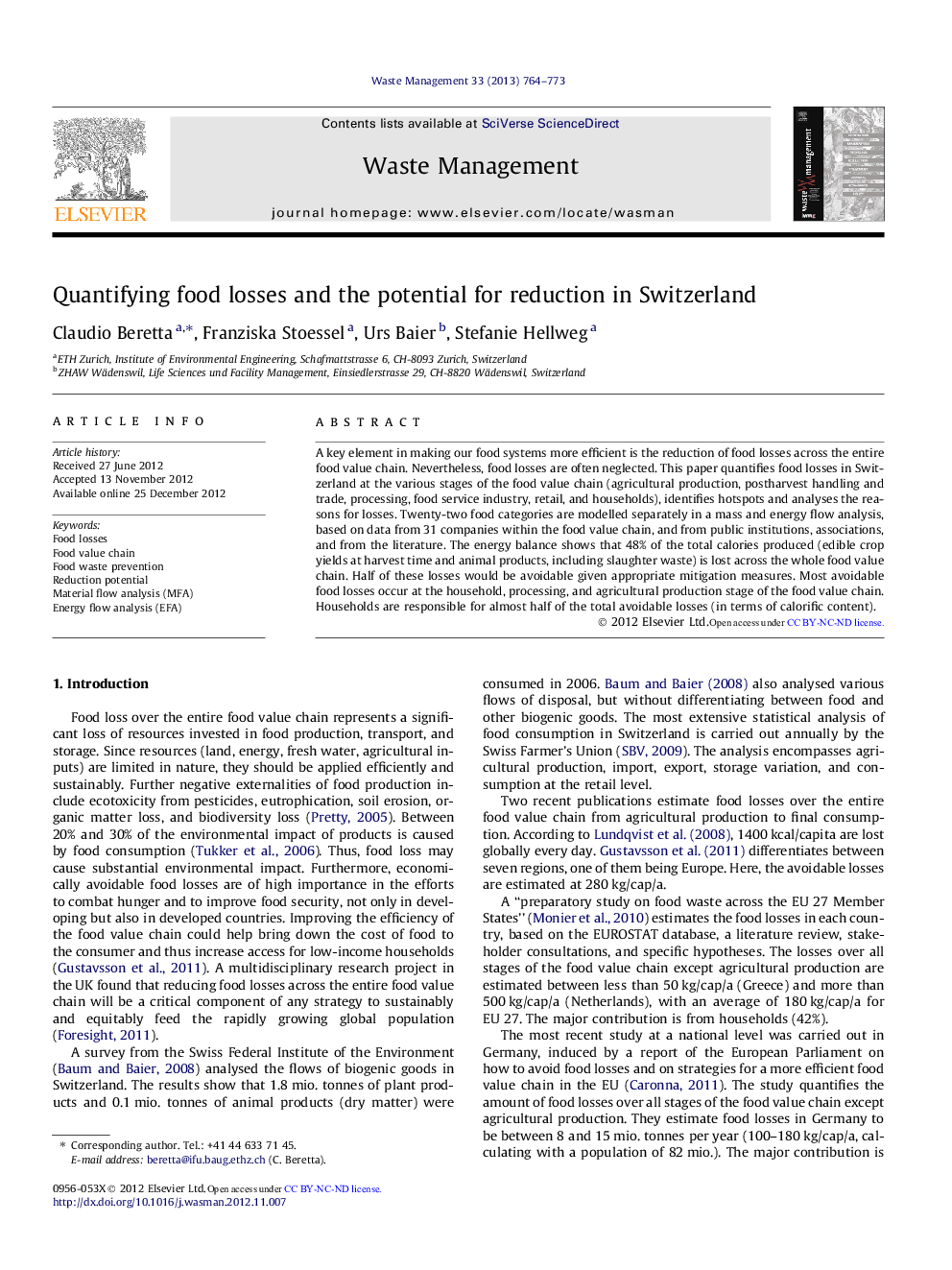| Article ID | Journal | Published Year | Pages | File Type |
|---|---|---|---|---|
| 6355561 | Waste Management | 2013 | 10 Pages |
A key element in making our food systems more efficient is the reduction of food losses across the entire food value chain. Nevertheless, food losses are often neglected. This paper quantifies food losses in Switzerland at the various stages of the food value chain (agricultural production, postharvest handling and trade, processing, food service industry, retail, and households), identifies hotspots and analyses the reasons for losses. Twenty-two food categories are modelled separately in a mass and energy flow analysis, based on data from 31 companies within the food value chain, and from public institutions, associations, and from the literature. The energy balance shows that 48% of the total calories produced (edible crop yields at harvest time and animal products, including slaughter waste) is lost across the whole food value chain. Half of these losses would be avoidable given appropriate mitigation measures. Most avoidable food losses occur at the household, processing, and agricultural production stage of the food value chain. Households are responsible for almost half of the total avoidable losses (in terms of calorific content).
⺠First MFA of food losses over the entire food chain in Switzerland. ⺠Differentiation into 22 food categories. ⺠Differentiation into avoidable, possibly avoidable, and unavoidable food losses. ⺠Conversion of mass flows into energy flows.
